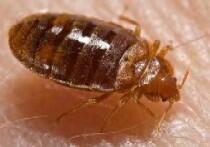Using Pesticides in Your Home
Pests in and around our homes can be a nuisance. Pests include insects (for example, cockroaches, bed bugs, wasps, and garden bugs), rodents (for example, mice and rats), and weeds. The pesticides, or chemicals, we use to treat pests can cause serious health problems. Pesticides can contaminate our indoor environment, cause and trigger allergies and asthma, and be especially dangerous to children, pregnant women, and pets.
Integrated Pest Management (IPM)
Integrated Pest Management (IPM) is a safer, effective, and environmentally friendly method used to control pests that is based on common-sense principles and science. This method focuses on minimizing the use of hazardous pesticides by first using knowledge of the life cycles of pests and how they interact with their environment to figure out the best ways to control the problem. If chemicals must be used, safer pesticides are chosen.
Be very cautious about using pesticides yourself. Pesticides can be hazardous to people and pets. If you choose to use a pesticide, or a licensed pest control professional suggests you use one, follow these precautions:
-
Only use pesticides clearly labeled for the type of pest you want to get rid of. Never use a pesticide that does not list the pest on the label.
-
Never use a product that is labelled for “outdoor use only” indoors.
-
Follow label instructions exactly.
-
Never spray pesticides on top of mattresses or sofas, or in areas where children or pets are present.
-
Never purchase or use a product without a manufacturer’s label and never buy pesticides from street vendors.
-
Avoid using “insecticide bombs” and “foggers” in your home. These products can spread hazardous chemicals throughout your home.
The Department of Housing and Urban Development has more information on IPM and Safe Pest Control.
Bed Bugs
Bed bugs are small insects that feed on human blood. They are usually active at night when people are sleeping. Adult bed bugs have flat, rusty-red-colored oval bodies. About the size of an apple seed, they are big enough to be easily seen, but often hide in cracks in furniture, floors, or walls. When bed bugs feed, their bodies swell and become brighter red. They can live for several months without food or water.
Bed bugs bite, but they do not transmit disease. Bed bugs painlessly feed on their host, injecting a tiny amount of saliva in the process, which can result in mild to severe allergic reactions. Many people do not react to bed bug bites, although the bite may leave a small welt. These welts do not have a red spot in the center like flea bites. Excessive scratching of these bites is highly discouraged as it can lead to secondary infections.



